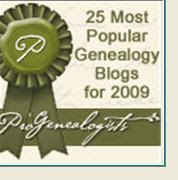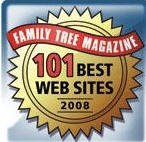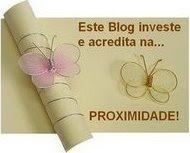Fear is an interesting emotion. It is even more interesting when it involves an established Jewish community and those who are considered "foreign," or, in some communities, those who have converted or wish to convert.
Perhaps it is an extension of an old joke. What's the first thing that two Jews on a desert island build? Three synagogues, so that there's always one they wouldn't be caught dead in.
It can range from the experience in Los Angeles when the large Iranian Jewish exodus began in the late 70s-early 80s. They began visiting major congregations in the city as they felt the need to worship as Jews as they had always done.
Persian synagogues in Iran were not joined via memberships, they were open to all. Being extremely family oriented, they ate elaborate Shabbat dinners at home and then went to services, arriving late, often just before the kiddush and its cookies.
In one prominent congregation, the mostly Ashkenazi congregation was infuriated. There were such silly comments as "they come only to eat our cookies," "they are always late to services," and on Shabbat morning, the entire family arrived, including babies in carriages, "it isn't dignified when the babies cry or the kids run around."
Day schools were full of Persian students, as Jewish education was important to these families. The American families didn't want their children in classes that had many Persian students enrolled.
Before asking questions and learning about this community, this congregation (and several others) had made up their minds. The idea that perhaps things were different elsewhere had never occurred to the congregation who were mainly two generations or more born in the US.
Today, of course, 30 years later, those new immigrant families are presidents of congregational boards, serve on boards of directors, are teachers in those schools, their children are USY presidents, and those same new families are now major financial contributors to the same congregation that accused them of only coming to Friday night services to eat their cookies.
Today, we can laugh at this, but at the time it was rather acrimonious.
In South America, the established Jewish communities don't know what to do with groups of Conversos or those who wish to convert and are coming out of the woodwork.
This
JTA story discusses the Latin American Jewish dilemma with masses of converts.
Luis Alberto Prieto Vargas appears to be a Jew. He wears a kipah, he introduces himself as Jewish and two years ago Vargas, a Christian by birth, underwent a conversion ceremony to Judaism following several years of religious study.
It all began seven years ago when Vargas, now 51, became part of a movement in Bogota of religious seekers.
“As I did, most of the people involved came from Christian roots,” he said. “And we found in Judaism an answer to our inquiries.”
But Vargas’ conversion hit a key snag: Jews.
First, Orthodox Jews in Colombia refused to accept Vargas and 200 or so others as would-be Jews, vehemently disavowing association with them and refusing them access to the community’s mikvahs for conversion.
The group, which calls itself Maim Haim -- Hebrew for “living waters” -- turned to religious authorities in Israel for training and, they hoped, eventual conversion, but it was stymied when Colombia’s Orthodox Jewish leadership contacted rabbinic authorities in Israel and warned them against accepting the
would-be converts.
The group found an Israeli willing to teach them. In 2007 the rabbi and two colleagues convened a bet din - Jewish religious court - and converted 104 people, including Vargas.
Many Jewish institutions in Colombia refuse to accept them as members. Their plight demonstrates the difficulty many converts and would-be converts have in Latin America.
Local Jewish communities are concerned about being overwhelmed by mass converts, and many have questions about whether the converts’ motivations are genuine. In Israel and in Colombia, the converts often are viewed skeptically - as emigres-in-waiting more interested in obtaining Israeli citizenship, which is available to all Jews, than Judaism itself.
Some 70 percent of the group's members have filed aliyah petitions, and are being delayed while Israel’s Chief Rabbinate tries to make a decision about their papers.
Colombia's chief rabbi Alfredo Goldschmidt believes there should be a filter, as there is an explosion of groups who want to convert.
In 1974, when he arrived in Bogota, Goldschmidt said he got about one call a month about conversion. In 1996, the rate had jumped to one a week. In 2002, there were two to three calls a week.
In December 2008, the country's nine Jewish communities discussed how to handle the mass conversions.
“Latin American Jewish communities are not prepared for the challenge of mass conversions,” said Marcos Peckel, president of the Colombian Jewish Community Confederation, the umbrella organization for Colombian Jewry.
There are cases now, he said, “in which people going through conversion processes are larger than the traditional Jewish community itself. This would significantly alter the community’s life.”
For the time being, Main Haim members have been keeping Jewish traditions -- acquiring a Torah scroll, holding bar mitzvah ceremonies and importing a mohel from Venezuela when there is a newborn to circumcise. Denied access to the mikvah in Bogota, the congregation uses a river outside of Bogota as its ritual bath.
Peckel says each Jewish institution must decide whether or not to accept Maim Haim congregants as members. He notes that the group’s members have not asked to join Colombia’s main Jewish institutions.
Nore the comment of Rabbi Guillermo Bronstein of Lima, Peru:
“We have to be humble,” Bronstein said. “Instead of judging the people wanting to be Jewish, we should put ourselves in their shoes.”
Read the complete article at the link above.









































